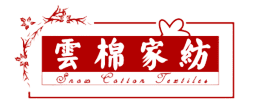Functional textiles mean that in addition to the basic physical properties of conventional textile products, they also have special functions that some conventional textile products do not have. In recent years, various functional textiles have emerged one after another. The following article summarizes the evaluation standards and evaluation indicators of eight functional textiles.
1 Moisture absorption and quick-drying performance
The performance indicators for assessing the moisture absorption and quick-drying ability of textiles. The national standard has two evaluation standards: “GB/T 21655.1-2008 Evaluation of Moisture Absorption and Quick-drying of Textiles Part 1: Single Combination Test Method” and “GB/T 21655.2-2019 Textiles Evaluation of Moisture Absorption and Quick-drying Part 2: Dynamic Moisture Transfer Method. Companies can choose appropriate assessment standards based on the characteristics of their products. Regardless of whether you choose the single-item combination method or the dynamic moisture transfer method, textiles must pass various relevant moisture absorption and quick-drying performance indicators before washing before they can claim that the textiles have moisture-absorbing and quick-drying performance.
2 Waterproof performance
Anti-soaking:
“GB/T 4745-2012 Testing and Evaluation of Textile Waterproof Performance, Water Soaking Method” is a method for testing the water repellency of textiles. In the standard, the anti-wetting grade is divided into 0-5 grades. Grade 5 indicates that the textile has excellent anti-wetting performance. Grade 0 means that it does not have anti-wetting performance. The higher the level, the better the anti-wetting effect of the fabric.
Resistance to hydrostatic pressure:
The hydrostatic pressure resistance simulates the waterproof performance of textiles in a rainstorm environment. The testing method used in the national standard is “GB/T 4744-2013 Textile Waterproof Performance Testing and Evaluation Hydrostatic Pressure Method”. The standard stipulates that the hydrostatic pressure resistance of textiles is not less than 4kPa to indicate that it has hydrostatic pressure resistance, not less than 20kPa indicates that it has good hydrostatic pressure resistance, and that it is not less than 35kPa indicates that it has excellent hydrostatic pressure resistance. The “GB/T 21295-2014 Technical Requirements for the Physical and Chemical Properties of Clothing” stipulates that it can achieve the rainproof function, the hydrostatic pressure resistance is not less than 13kPa, and the rainstorm resistance is not less than 35kPa.
3 oil repellent performance
It is more commonly used in anti-oil and anti-fouling functional clothing. Woven textiles can refer to the technical requirements in “GB/T 21295-2014 Technical Requirements for Physical and Chemical Properties of Clothing”, and test according to the method standard “GB/T 19977-2005 Textile Oil and Hydrocarbon Resistance Test” to achieve oil repellency The grade is not less than 4. Other types of textiles can refer to or customize requirements.
4Easy decontamination performance
Woven textiles can refer to the technical requirements in “GB/T 21295-2014 Technical Requirements for Physical and Chemical Properties of Clothing”, and conduct tests in accordance with the method standard “FZ/T 01118-2012 Textile Antifouling Performance Testing and Evaluation Easily Decontaminating” , To reach the easy decontamination level not less than 3-4 (natural white and bleaching can be reduced by half).
5 Anti-static performance
Many winter clothes like to use anti-static textiles as fabrics, and there are many standard methods for assessing electrostatic performance. The product standards include “GB 12014-2019 Protective Clothing Anti-static Clothing” and “FZ/T 64011-2012 Electrostatic Flocking Fabric” , “GB/T 22845-2009 Antistatic Gloves”, “GB/T 24249-2009 Antistatic Clean Fabric”, “FZ/T 24013-2020 Durable Antistatic Cashmere Knitwear”, etc. The method standards include GB/T “12703.1-2008 Evaluation of Electrostatic Properties of Textiles Part 1: Static Voltage Half-life”, “GB/T 12703.2-2009 Evaluation of Electrostatic Properties of Textiles Part 2: Charge Area Density”, “GB/T 12703.3 -2009 Evaluation of Electrostatic Properties of Textiles Part 3: Electric Charge” etc. Companies often use 12703.1 to assess the static half-life of textiles to evaluate the grade of the fabric, which is divided into A, B, and C levels.
6 Anti-UV performance
“GB/T 18830-2009 Evaluation of Textile Anti-UV Performance” is the only national method standard for testing the anti-UV performance of textiles. The standard specifies the test method for the anti-sunlight and ultraviolet performance of textiles, the expression, evaluation and labeling of the protection level. The standard stipulates that “when the sample’s UPF>40 and T(UVA)AV<5%, it can be called an anti-ultraviolet product.”
7 Insulation performance
FZ/T 73022-2019 “Knitted Thermal Underwear” requires a thermal insulation rate of more than 30%, and the method standard cited is GB/T 11048-1989 “Textile Thermal Insulation Performance Test Method”. If it is thermal underwear, this standard test can be selected. For other textiles, since GB/T 11048-1989 has been obsolete, the Cro value and thermal resistance can be assessed in accordance with the new standard GB/T 11048-2018, and the plate method can be used in accordance with the “GB/T 35762-2017 Textile Heat Transfer Performance Test Method” 》Assess thermal resistance, heat transfer coefficient, Crowe value, and heat preservation rate.
8 non-iron textiles
Products such as shirts and dress skirts are required to have non-iron performance to facilitate daily maintenance by consumers. “GB/T 18863-2002 Non-iron Textiles” mainly assesses the appearance of flatness after washing, the appearance of seams, and the appearance of pleats.
Post time: Sep-08-2021


